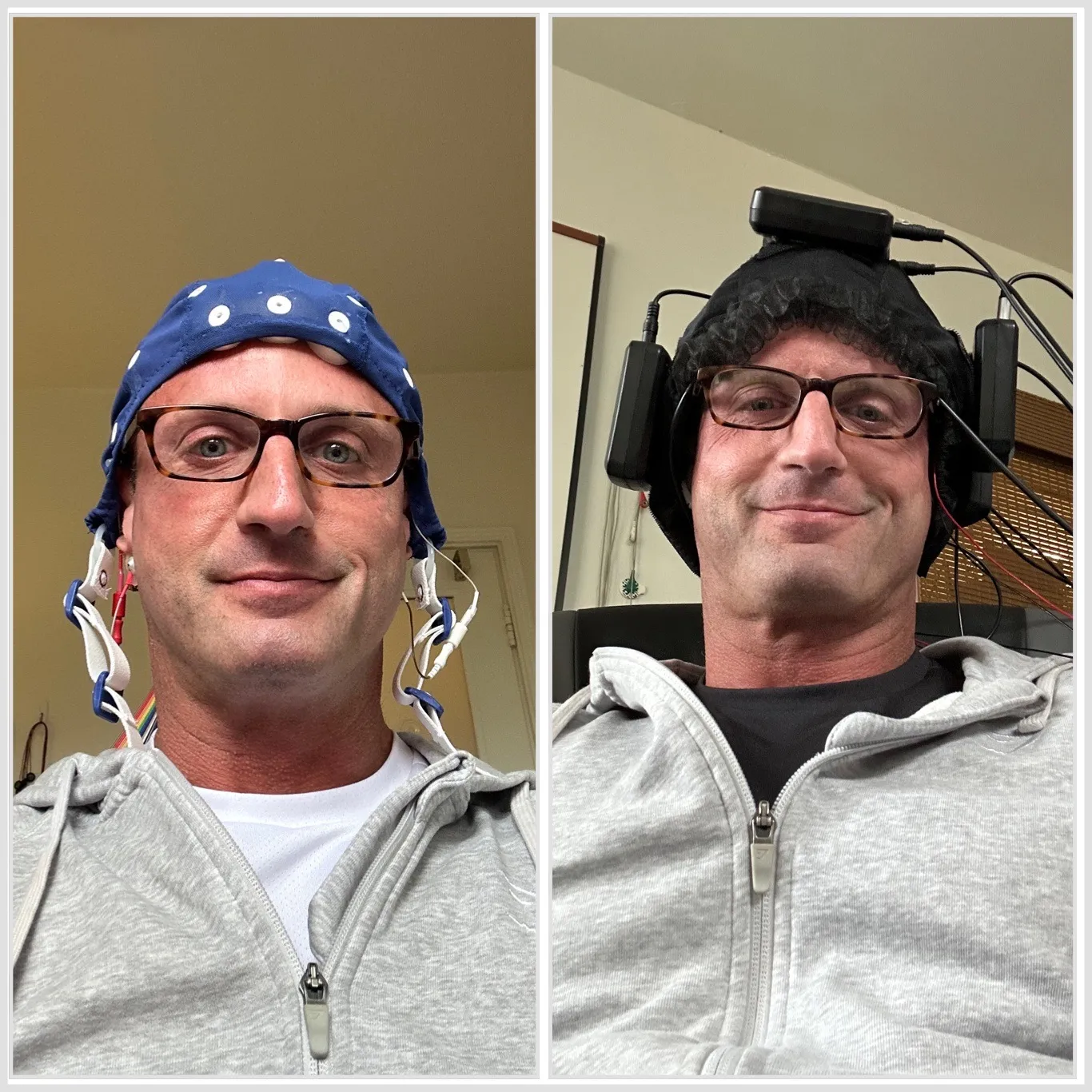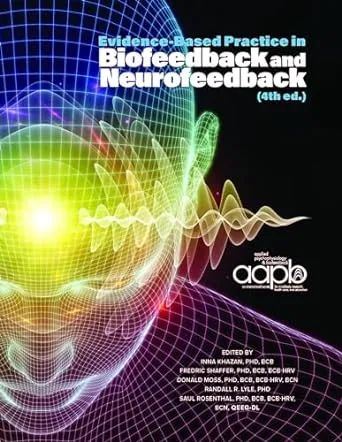Unlocking the power of neurofeedback therapy for ADHD: Techniques, efficacy, and insights
Discover the latest techniques and insights in neurofeedback therapy for ADHD. Learn about its efficacy and how EEG can help children with ADHD.
Apr 3, 2024
Growing up, I faced challenges in school that I never quite understood. Despite being intelligent, I struggled as a student, constantly battling to pay attention in class. In middle school, probably around 5th grade, a teacher referred to me quit accurately as “Sleepy Eyes.” Even attending the prestigious Thomas Jefferson High School for Science and Technology and developing a reputation in the computer systems lab as a star hacker, I found myself scraping by with mediocre grades. After dropping out of Virginia Tech after a couple semesters, I excelled in the tech industry based on my creativity, not my ability to focus! It wasn’t until my mid-30s that I began to suspect there was something more at play.
The revelation came as a surprise. The thought of ADHD would have never crossed my mind, but I had to acknowledge that my lack of attentional control and ability to maintain focus was beginning to hold back my professional life and my potential. In my mid-30s (about 8 years ago) I began to investigate neurofeedback to enhance my performance, and surprise! I discovered that my brain activity would fit the profile of an inattentive ADHD type, with my brain waves showing significant excess frontal theta and significant eyes open alpha throughout the head.
I had to do something — just trying to work around my inattentiveness wasn’t working. I wanted to be able to fit in to the high-performance world around me, without forcing the world to change to suit my needs.
Why neurofeedback in a large marketplace of ADHD solutions
There are lots of options available today to address these symptoms. I dabbled with medication, but wasn't happy with the side effects. I looked at cognitive behavioral therapy, coaching, and the wide variety of books and support groups out there, but I didn't want a support group or coping mechanisms - I wanted to crack this nut! I wanted a solution, not a temporary fix.
Neurofeedback training stands out as a promising approach to managing symptoms of ADHD. Unlike medication or behavioral therapy, which are commonly used to treat ADHD, neurofeedback focuses on directly training the brain to function more efficiently. This form of therapy, also known as EEG biofeedback, involves monitoring a patient's brain wave patterns through a process that is non-invasive. By providing feedback on electrical activity in the brain and helping individuals learn to regulate their own cortical rhythms, neurofeedback can help improve attention, focus, and impulse control. Research in the field of neuroscience has shown that individuals with ADHD may have an imbalance of slow cortical potentials, alpha waves, and theta waves, which can contribute to their symptoms.
Adults and children who struggle with ADHD are not the only ones who can benefit from neurofeedback. Individuals with autism spectrum disorders, epilepsy, traumatic brain injury, stress disorder, and anxiety disorders may also find relief through this form of brain training. Studies, including those conducted by the National Institute of Mental Health, have shown promising results for the efficacy of neurofeedback in treating a variety of mental health conditions. Eeg neurofeedback has been shown to be effective in improving symptoms related to brain injury and trauma, as well as enhancing overall cognitive function.
How neurofeedback works to address symptoms of ADHD
Neurofeedback is a type of biofeedback that focuses on training the brain to improve overall brain function. Specifically, neurofeedback for ADHD targets the symptoms of attention deficit hyperactivity disorder, including symptoms like impulsivity and inattentiveness. During a neurofeedback session, an electroencephalography (EEG) cap with electrodes is placed on the head to monitor brainwaves. Using this real-time feedback, individuals with ADHD are able to learn to control their brain activity. The feedback often comes in the form of a video game or auditory cues, where individuals must focus on increasing or decreasing certain frequencies, such as beta waves, which are needed in the pre-fontal cortex to sustain attention.
My journey with neurofeedback
My personal experience with neurofeedback started with the Muse headband, a simple device that didn't improve my symptoms but proved the effectiveness of neurofeedback. What a revelation, the power to change our mindset!
I quickly explored various consumer products, including basic 4-Channel EEG devices for home neurofeedback training. While I saw some progress, the breakthrough came when I upgraded to the advanced 19-Channel QEEG system. This led to significant relief from my symptoms, inspiring me to enter the field and provide top-notch services. This led me to an even more advanced technique, neuromodulation.

How neuromodulation compares to neurofeedback for ADHD symptoms
Neuromodulation, although less common than neurofeedback, is gaining attention for its faster and more efficient outcomes, which can be particularly advantageous for our busy clients. Here's why:
Rapid Effects: Neuromodulation often produces noticeable improvements in cognitive function and mood after just a few sessions. This quick response instills confidence in the process.
Fewer Sessions: Compared to neurofeedback, also known as EEG biofeedback, neuromodulation typically requires fewer sessions, often just around 10-20, to achieve lasting change. Neurofeedback may take twice as long or more.
Enhanced Motivation: The rapid progress seen with neuromodulation keeps clients motivated and engaged in the treatment.
In nearly all cases, I tend to recommend neuromodulation instead of neurofeedback, but neurofeedack has a sweet spot in some particular use cases.
ADHD as a diagnostic label
Since beginning this journey, I’ve learned that today ADHD occurs in roughly 5.3% of children worldwide, making up as much as 50% of the child psychiatric clinic population. It often persists into adulthood, with a persistence rate of 4% to a whopping 76%. It has become so widespread in both kids and adults, today we even have a new term “VAST: Variable Attention Stimulus Trait,” which describes people with “ADHD” traits without the full criteria for a clinical diagnosis. The fast pace of modern life is driving us to distraction!

I had never identified with “ADHD,” but I couldn’t deny that my brain was dysregulated, making it difficult to pay attention — I was constantly lost in my head. I’ve never been fond of diagnostic labels, what I call “the language of disorder.” It may be helpful for insurance reasons, but it “lacks reliability, validity, utility, and distinctiveness” (Cohen, 2022). Today many clients prefer to be seen and understood holistically as individuals.
It’s important to note that neurofeedback and neuromodulation don't exactly treat a diagnostic label. They work by training our brain waves, which reflect our thinking patterns. Diagnostic labels describe the experience we have as a result of our thinking patterns. In the case of attention, focus and concentration, the parts of the brain that are implicated are very well understood, and highly trainable! In my case the dysregulation was primarily at the left dorsolateral pre-fontal cortex and the anterior cingulate cortex. Excess theta waves and alpha wave activity in these executive centers, reflected by reduced blood flow, made it difficult to engage my executive control.
Regardless of whether you identify as having ADHD, and regardless of which school of thought you subscribe to about the origins of it, you can train your brain for better executive function and attention.
ADHD and Driving
My attention was so bad that when I spaced out, I practically fell asleep! Fortunately I was a high performer, and when this happened in an executive meeting, I learned later that everybody chalked it up to “James being James,” that it was normal and fine. It would not have been “normal and fine” had I been behind the wheel, and this was the main reason why I never sought to get a driver’s license until my early 40s, when I got this under control.
I’ve since also learned that this can be a real concern with ADHD — the symptoms associated with ADHD elevate the risk of motor vehicle crashes for teenagers and adults. Driving with ADHD requires heightened awareness as it addresses the unique challenges individuals with ADHD may face, including maintaining focus and regulating impulses, to contribute to a safer road environment among drivers.
I recently spoke with an expert on the subject, and learned more from a law firm that specializes in personal injury. I used to always do better about staying alert when I’m with somebody to stay engaged with, and this is one of many suggestions they make on their web site: ADHD and Driving.
Neurofeedback and neuromodulation add new skills, they don't subtract them
I’ve always been highly creative and intuitive, and when I started down this path, I considered the possibility that my propensity for daydreams and liminal states was where my creativity was seated — and I didn’t want to lose that. I was pleased to discover that neurotherapy didn’t take anything special away, instead it gave me greater range and flexibility.
In fact, I would say that training the ability to maintain focus when I need it has enhanced my creativity. Previously the inspiration would strike, and I’d begin something, but it would sputter out. I had countless unfinished projects. Now I have the flash of insight and then I can flex up and see my projects through, which in turn opens the door for further inspiration and creativity!
The data is in — Neurofeedback works
Neurofeedback has a rich history dating back to the 1960s, when it began in research on operant conditioning and neurophysiology. Researchers discovered that individuals could learn to regulate their brainwave patterns through real-time monitoring and feedback. The technology advanced over the years, with the development of computer-based systems and more precise measurements.
Neurofeedback research has shown the effectiveness of neurofeedback in treating a variety of health conditions, including ADHD. The International Society for Neurofeedback and Research and the Biofeedback Certification International Alliance are just a few organizations that support the use of neurofeedback in clinical applications. While some critics argue that the benefits of neurofeedback may be due to a placebo effect, further examination of the results show that neurofeedback is very specific and has a large effect size for ADHD.
Current evidence, including systematic reviews and pilot studies, supports the use of neurofeedback treatment for ADHD. Double-blind randomized controlled trials have demonstrated the long-lasting effects of neurofeedback on symptoms such as chronic pain and hyperactivity. By training the brain to reach the desired state, i.e., listening to music, neurofeedback can help children with attentional challenges in improving their focus and behavior.
It is surprising to hear that much skepticism remains about the technology. We could hypothesize about “Big pharma keeping down the alternative health modality,” but this may not actually be the case. Since 2011, GlaxoSmithKline and AstraZeneca have announced closures of many neuroscience divisions, and other big players have followed. Psychopharmaceuticals have 50% less chance of making it to market and take 30% longer to bring to market than other drug categories (Gribkoff 2017). On top of the cost, 4 out of 5 new psychopharmaceuticals fail phase III trials due to not being better than placebo! (Kesselheim 2015)

© 2023 Applied Psychophysiology and Biofeedback
Based on insights from “Evidence-Based Practice in Biofeedback and Neurofeedback,” neurofeedback presents a promising, non-pharmacological approach for managing ADHD (note that a new 2023 edition of this work is available on Amazon). It has undergone rigorous scientific evaluation, demonstrating its efficacy in enhancing cognitive function and behavior in individuals with ADHD. The research supports neurofeedback as a viable treatment option, aligning with the American Academy of Child and Adolescent Psychiatry’s clinical guidelines.
You can have confidence in neurofeedback and neuromodulation
If you are considering ways to improve your attention, focus or concentration, you can have confidence that neurotherapy is backed by substantial evidence advocating its effectiveness and potential as a beneficial intervention.
Clinicians who use neurofeedback commonly quote a success rate of 75–80% for a variety of conditions and you’ll find this is supported by clinical literature, in particular the previously mentioned “Evidence-Based Practice in Biofeedback and Neurofeedback.” And in my experience, non-responders typically have foundational matters that need to be addressed to support brain function — metabolic support through diet and nutrition or removing toxins and other influences from their environment. At this point it is well-understood how processes like the methylation cycle have a profound effect on neurotransmitter balance (Miller, 2013). Often, once we resolve those issues, the neurotherapy is effective. A good practitioner will be able to identify red flags for metabolic and environmental factors and provide the support you need.
ADHD medications typically have a similar success rate, with studies showing that between 70–80% of children with ADHD experience a reduction in symptoms. That said, there are challenges with medication adherence, with estimates ranging from 52–87% due to reasons like psychological side effects and perceived inadequate effectiveness (Advokat 2013). Medication is effective, but comes with some significant side effects, whereas neurotherapy is a training process that provides the skills of focus and concentration that can last a lifetime. But it takes time to develop a new skill — and medication works immediately.
Book a free consultation and learn more
You don't have to be sick to get better. Neurofeedback and neuromodulation are powerful tools that anyone can use to improve performance, improve focus, optimize your brainwave activity and reach you top level of performance.
In my peak performance coaching and neurotherapy practice I don't "treat ADHD," but I can apply these technologies to help you focus and concentrate better. We use the most advanced 37-channel QEEG and ERP recordings to pinpoint where your brain has been conditioned into unproductive patterns, and use advanced neuromodulation to relax those patterns and entrain more healthy patterns that will help you focus and become a productivity superstar.
In addition to training your brain, we can also identify if your attention may be impacted by environmental or metabolic factors and coach you through addressing those limitations.
Finally, we pair with neuromodulation and neurofeedback the latest in neuroscience-backed practices documented by the Flow Research Collective to help you take advantage of your new peak performance brain and get the most out of it.
Book a free consultation with us today and learn how we can help!
© 2023 - 2024 James Croall - All Rights Reserved.
Learn how to break free!
Complete our quick 2-minute assessment to learn more about your key obstacles to peak performance, and explore both self-help solutions and how we can help you become your best self.

